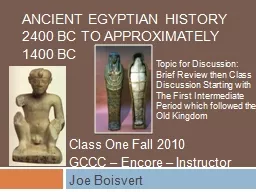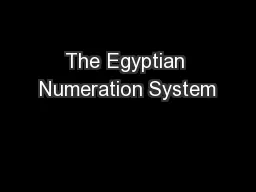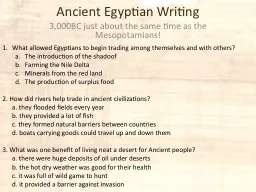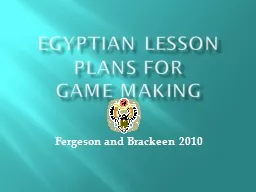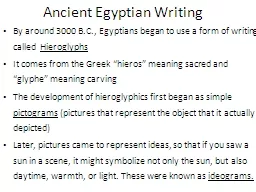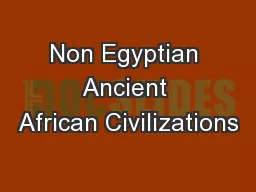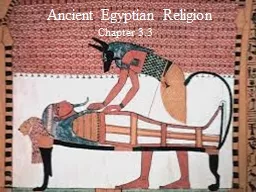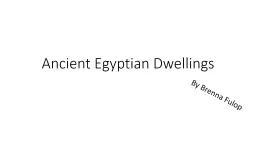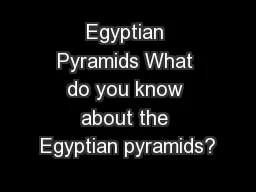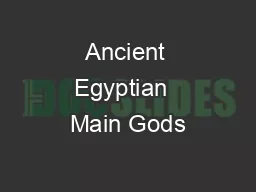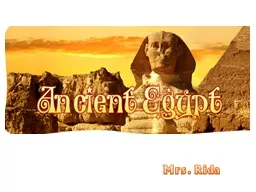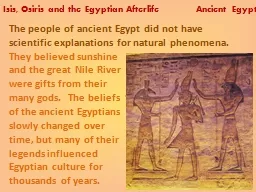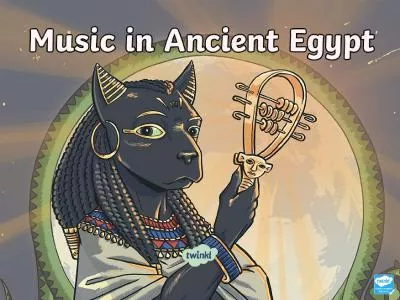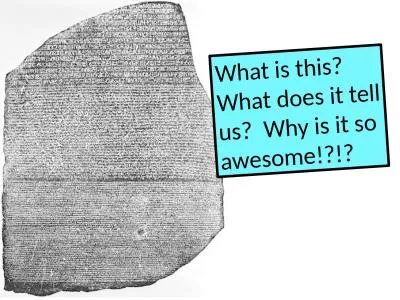PPT-Ancient Egyptian History 2400 BC to approximately 1400 BC
Author : pasty-toler | Published Date : 2017-09-27
Class One Fall 2010 GCCC Encore Instructor Joe Boisvert Topic for Discussion Brief Review then Class Discussion Starting with The First Intermediate Period which
Presentation Embed Code
Download Presentation
Download Presentation The PPT/PDF document "Ancient Egyptian History 2400 BC to appr..." is the property of its rightful owner. Permission is granted to download and print the materials on this website for personal, non-commercial use only, and to display it on your personal computer provided you do not modify the materials and that you retain all copyright notices contained in the materials. By downloading content from our website, you accept the terms of this agreement.
Ancient Egyptian History 2400 BC to approximately 1400 BC: Transcript
Download Rules Of Document
"Ancient Egyptian History 2400 BC to approximately 1400 BC"The content belongs to its owner. You may download and print it for personal use, without modification, and keep all copyright notices. By downloading, you agree to these terms.
Related Documents

